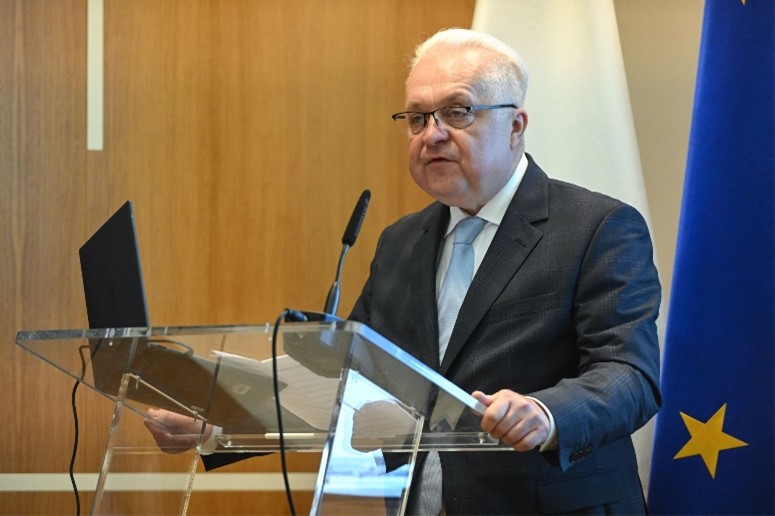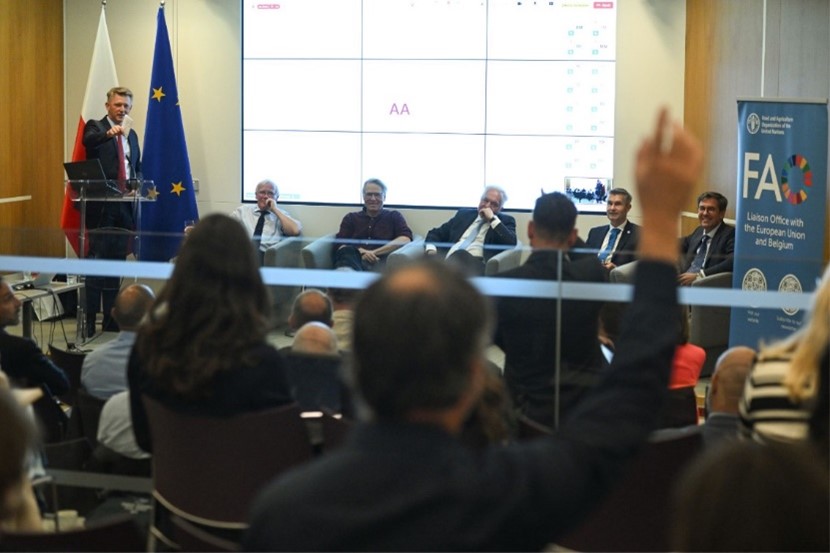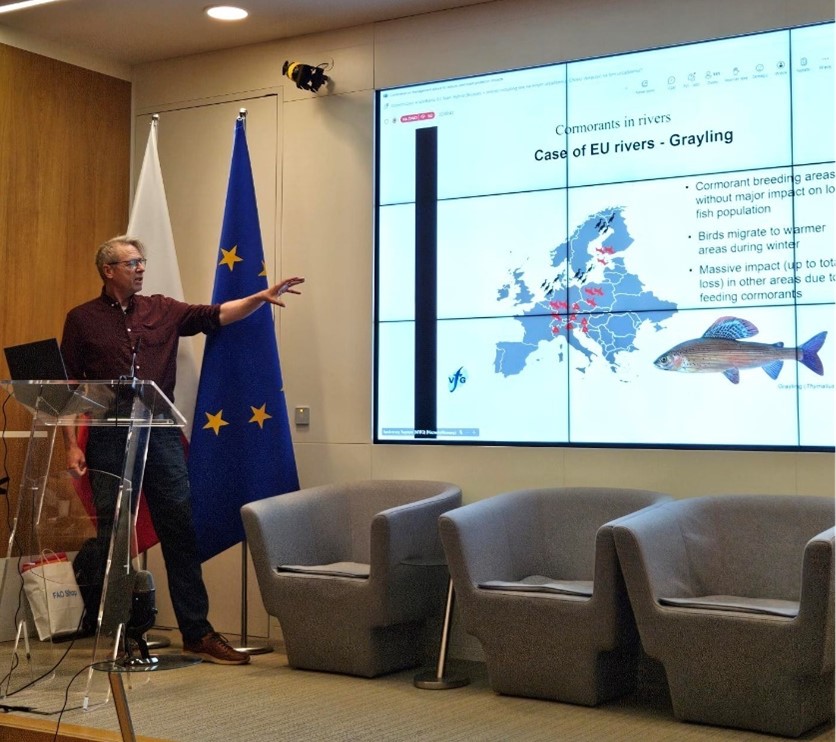On 03 June 2025, the Polish Presidency of the Council of the European Union, in cooperation with the European Inland Fisheries and Aquaculture Advisory Commission (EIFAAC), hosted the first Conference on Management Advice to Reduce Cormorant Predation Impacts in Brussels.
A timely event to underline the need for a European Cormorant Management Plan
Initially a conservation success story, the Great Cormorant’s has experienced exponential population growth since the 1980s, following its protection under the EU Birds Directive. Today, with over 1.5 million birds across Europe, the species exerts considerable predation pressure on our aquatic ecosystems.
Despite various national initiatives, fragmented and uncoordinated actions have proven insufficient. Fish stocks continue to decline and angling clubs report that their restoration efforts have been locally severely hindered by cormorant predation. The 03 June conference opened with remarks by Deputy Minister for Fisheries of Poland, Mr Jacek Czerniak, and featured contributions from the European Commission and the FAO Liaison office in Brussels Director, Mr Raschad Al-Khafaji.
“When policies have unintended consequences, they have to be revised”, stated Mr Al-Khafaji, a statement which perfectly summarized the importance of the Conference.
The event brought together representatives from EU Member States, the European Commission, the European Parliament, EIFAAC, and civil society organisations as the European Anglers Alliance (EAA).
During the conference, experts presented the ecological and economic consequences of cormorant predation on inland fisheries and aquaculture. Dr Niels Jepsen (Danish Technical University) presented data on the impact on fish populations, while Dr Raymon van Anrooy (EIFAAC) detailed the resulting economic pressures on fisheries and aquaculture sectors, including the recreational fisheries sector. To conclude the event, Dr Ian Cowx (Angling Trust/University of Hull) introduced the second draft of the Framework towards the development of a European Management Plan for the Great Cormorant.
Cormorant predation - a major obstacle to thriving recreational fisheries
As the EAA already has reported intensively, recreational coastal and lake fisheries are greatly impacted by cormorant predation with drastically reduced fish populations.
During the conference, Dr Raymon VanAnrooy (EIFAAC/FAO) highlighted that an ongoing study by EIFAAC, the Federation of European Aquaculture Producers (FEAP) and European Angling Alliance (EAA) estimated that the costs of cormorant predation to aquaculture and fisheries in Europe were more than 350 million euros per year in 2023 and 2024.
In the same – ongoing – study, “Recreational fishing clubs reported losses of stocked fish in the order of 100 million euros annually due to cormorant predation. In comparison, heron predation losses to aquaculture and recreational fisheries were estimated at 48 million euros annually” VanAnrooy added.
These elements have been acknowledged under the draft framework by EIFAAC and underline the need for a European approach to cormorant predation. The European Anglers Alliance welcomes EIFAAC’s recognition of the recreational sector as steward of aquatic ecosystems. The draft framework – presented during the Conference – underlines:
"Recreational fishing organizations are widely acknowledged as providing stewardship to the nature resources under their management. Many of these organizations reported that river restoration to maintain and rehabilitate aquatic biodiversity is failing because of predation of fish by cormorants…”
"The level of predation by cormorants has reached the point where fishing organizations can no longer bear the costs of re-stocking. Reduced catches by recreational fishers lead to less participation and reduced income for angling clubs and rural communities, and consequently less expenses and effort towards stewardship of the inland aquatic resources…Loss of members, loss of tourists, reduction in license fee income for recreational and commercial fishing are negative effects associated with the high level of cormorant predation.”
EAA Cormorant position & way forward
In order to ensure a good balance between the interests of anglers and the conservation of birds, fish and biodiversity, the EAA supports the development of a pan-European management plan for the cormorants and demands an improved system for the collection of scientific data.
Similarly, the EAA fully supports the appropriate implementation of the Birds Directive, which is an important piece of the EU environmental legislation.
EAA believes that the draft framework, presented during the Conference & developed with support from the European Maritime, Fisheries and Aquaculture Fund (EMFAF) and the FAO-European Commission Trust Fund, represents a strategic & much-needed roadmap for mitigating the negative impacts of cormorants on fish biodiversity, and inland and coastal recreational fisheries across Europe.
The EAA's position paper (2023) on Cormorant can be accesssed via this link.



Photo credits: Polish Presidency to the Council of the EU (2025)
More background information
Previous articles on EAA website covering cormorant predation